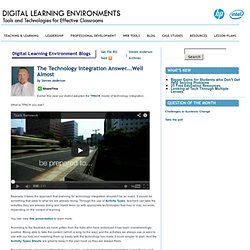

Office of Educational Technology. Best practices for professional development in technology-enabled classrooms. By Lisa deRoy Education Advocate, SMART Technologies The National Staff Development Council’s (NSDC) current definition of professional development sets the stage for progressively repositioning professional development in a new light. It focuses on continuous, professional learning within a school where educators actively take part in setting the goals and assessing the outcomes. This definition also makes additional key points: The Association of Educational Publishers Group News. According to ABC News’ Children Late for School, Parents Charged in Virginia, the Virginia school district had the sheriff’s deputy’s handcuff and arrest Maureen Blake while hosting a slumber party for her children.

It seems that Blake was responsible for her children being tardy ten times since the start of this school year. Apparently she had the same problem last year and paid around $2,000 in fines. District spokesman Wayde Byard said, “Even when they’re a minute late… it’s very disruptive.” Executive Director of the American Association of School Administrators, Dan Domenech, says that parents have to understand it’s not just about them and their child. “The disruptive factor, the security factor, the bad-example factor” are all concerns for Domenech. The Technology Integration Answer...Well Almost. Earlier this year our district adopted the TPACK model of technology integration.

What is TPACK you ask? Basically, it takes the approach that planning for technology integration shouldn't be an event. Teachers Want More Access to Classroom Technology. THE Journal: Technological Horizons in Education. Technology & Learning - The Resource for Education Technology Leaders. Digital Directions: Digital Directions: Trends and Advice for K-12 Technology Leaders.